9.3. Recommendations
Using the Thunderbird e-mail manager as an RSS feed source/reader. The e-mail management software tool Thunderbird is a free, open-source software tool that allows for following and Reading RSS content. We will now show you how to add a RSS source using this application. As an example, we will use “INFORMÀTICA++”, a blog on computer science moderated by teachers in the Computer Sciences, Multimedia and Telecommunications Degree at UOC.
As the first step to add a RSS source to Thunderbird, click on the “Edit” menu and choose the option “Account Settings”. Click on the icon “Account Actions” in the pop-up window, and choose “Add Feed Account”.

By doing so, we are creating a folder for our subscriptions. We may create several folders for different subjects, such as news, computer-related topics, cooking, etc. We will give the folder a name:
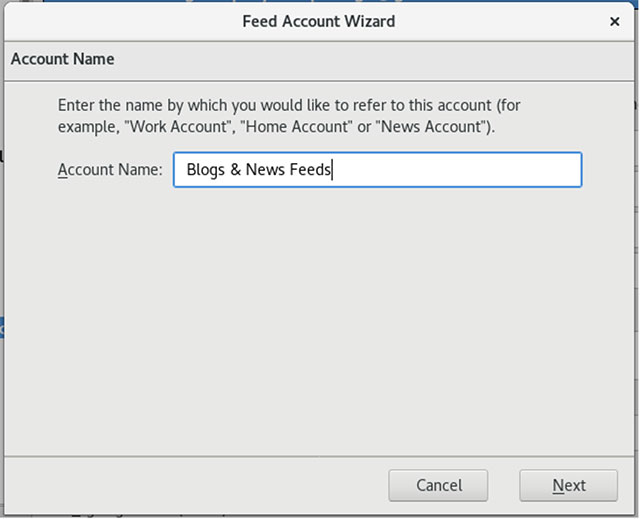
From this new account we may add new subscriptions by clicking “Manage subscriptions”.
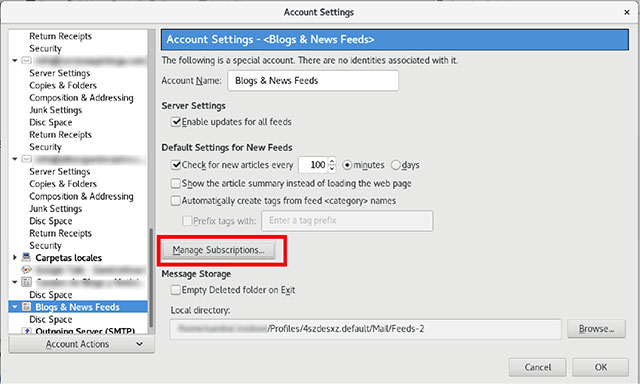
Now we need to provide the location of the RSS feed we want to add. In this case, we will provide the following address: «http://informatica.blogs.uoc.edu/feed/»
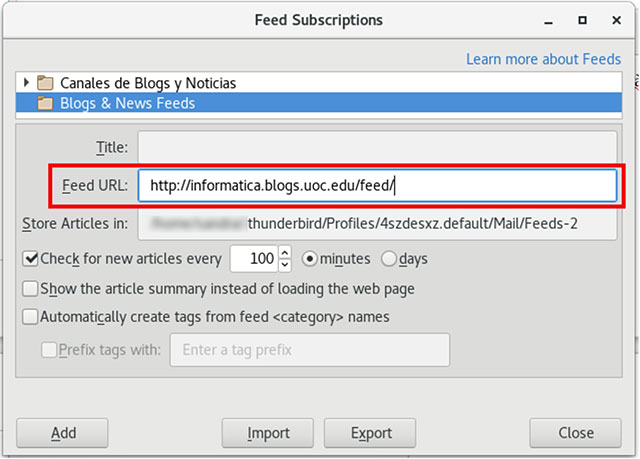
In the following step, we will be able to provide settings for several options in the source (name, delivery location, type of download, etc.).
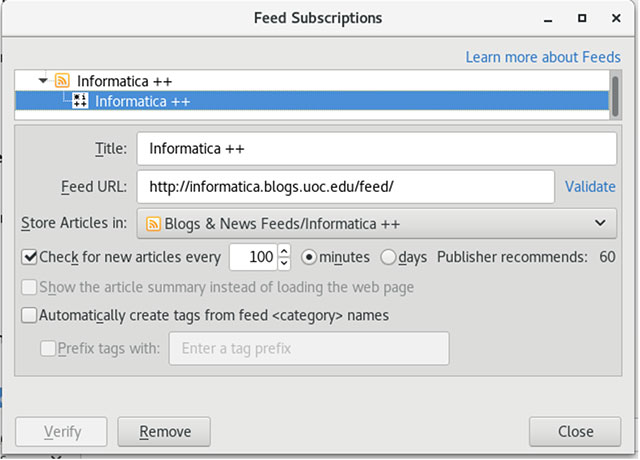
Once the RSS feed has been added, we will start receiving update alerts from the website, and we will be able to download the content and read it comfortably from Thunderbird.

Use dynamic markers in Mozilla Firefox to add and read RSS sources. Unlike other browsers, Mozilla Firefox uses dynamic markers, a functionality that makes it possible to obtain the most recent updates from any websites you are subscribed to without having to visit them. Every sixty minutes, the browser will automatically check dynamic markers in order to obtain the latest updates from your favorite websites. In any case, they may be manually updated by right-clicking on a given dynamic marker and choosing the option “Update dynamic marker”.
Dynamic markers are stored by default in folders from the “Marker toolbox” (in the “Markers” menu). They may also be stored directly in the “Markers” menu in Firefox, as would any other marker. In order to see the latest updates on a website you are subscribed to, you will simply need to access the “Markers” menu and choose the desired dynamic marker.
We will now see how to add a dynamic marker in Firefox. The UOC “INFORMÁTICA++” blog will be used again as an example.
First of all, you will need to make sure that the site you wish to subscribe to has an RSS feed available. In case it does, as is the case for the “INFORMÁTICA++” blog, you will need to click on the “Subscribe to this page” option in the “Markers” menu.

If the option is provided by the website, you will be allowed to choose between complete feeds, RSS for the comments or simply the beginning of RSS for the comments. Once you have chosen the desired option, you will need to indicate you wish to subscribe to that channel through “Dynamic markers”.

Afterwards, you will need to choose a name for this dynamic marker and press the button “Subscribe”. By default, it will be stored in the “Firefox markers toolbar” in the “Markers” menu.
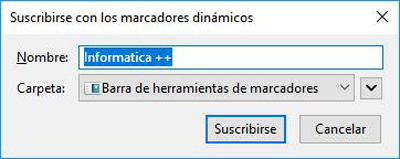
The dynamic marker will be added to the browser and you will be able to access it through “Markers” > “Markers Toolbar” in order to find out about the most recent updates in that website. By clicking on the desired piece of news, you will have access to its page. If you choose “Open everything in tabs”, each piece of news will appear on an independent tab.
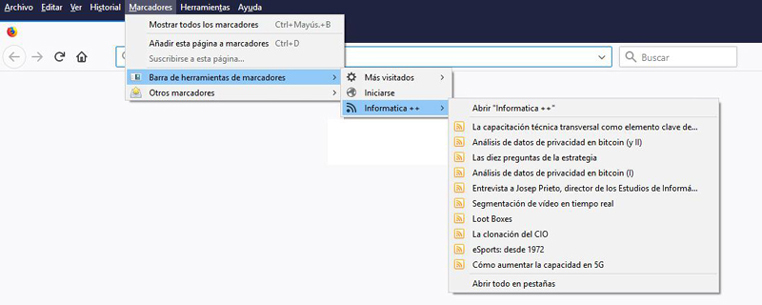
Manage notifications from YouTube video channels using Google Chrome. YouTube offers an option to receive notifications from channels while using the Google Chrome browser. By activating this function, pop-up windows will appear to alert you on new contents in the channels you are subscribed to.
In order to do this, sign in to your YouTube account and click on “Configuration” > “Notifications”. Afterwards, click on the “Activate” button beside the Chrome icon in the “Desktop Notifications” section.

Check the playlist of a channel. Checking the playlist of a channel is a good option when you are not interested in all the videos published in that channel. Reproduction lists will enable you to keep on top of all published contents. Nevertheless, you need to make sure this option is available in the channel, as it is not available in all of them.

In most channels, the section for playlists may be opened by simply adding “/playlists” to the channel URL.
